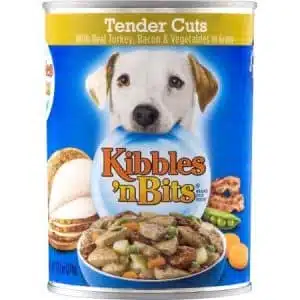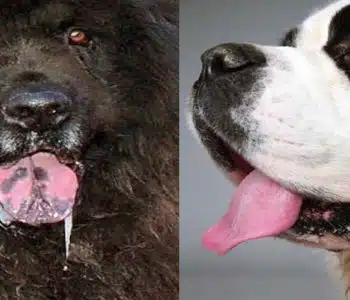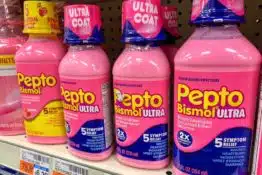
Dachshund Pomeranian Mix: The Best Pom-Dach Guide
A Tiny Punk with a Lot of Spunk: Meet the Dachshund Pomeranian Mix
With cute nicknames like Pomaweenie, Pom-Dach, and Doxie-Pom, Dameranian—a mix of a Dachshund and a Pomeranian—sounds a bit like it will start cheerleading at any moment, with all the poms and fluff. And you know what? They do have a cheerleader vibe going on. They are playful, lively, and outgoing, and they tend to be loud from time to time. One thing’s for sure—you wouldn’t be able not to notice them even if you wanted to.
In their minuscule bodies, these dogs pack quite a punch. Full of life and personality, this cross-breed is one of the most loving and loveable mixes. It’s surprisingly easy to fall in love with them, but before you let them into your heart and home, here’s all you need to know about them.
Best Dog Food for Dachshund Pomeranian Mix
Selecting the best dog food for a Dachshund Pomeranian mix, or Dameranian, involves considering their small size, energy levels, and potential genetic factors. Opt for high-quality small breed dog food with real meat, whole grains, and vegetables to support their overall health and sustained energy. Since these mixes may be prone to dental issues, choose a kibble with dental benefits or supplement their diet with dental chews. Regular vet check-ups can help tailor the diet to their specific needs.

- Essential, high-quality protein for healthy muscle development, and carbs for energy for an active life.
- Calcium, phosphorus and essential vitamins for strong bones and teeth.
- Glucosamine is added for joint health and mobility support.
- Vitamins, chelated minerals and antioxidants contribute to your pup's immune system health.
- No corn, wheat, soy or chicken (or poultry) by-product meals.
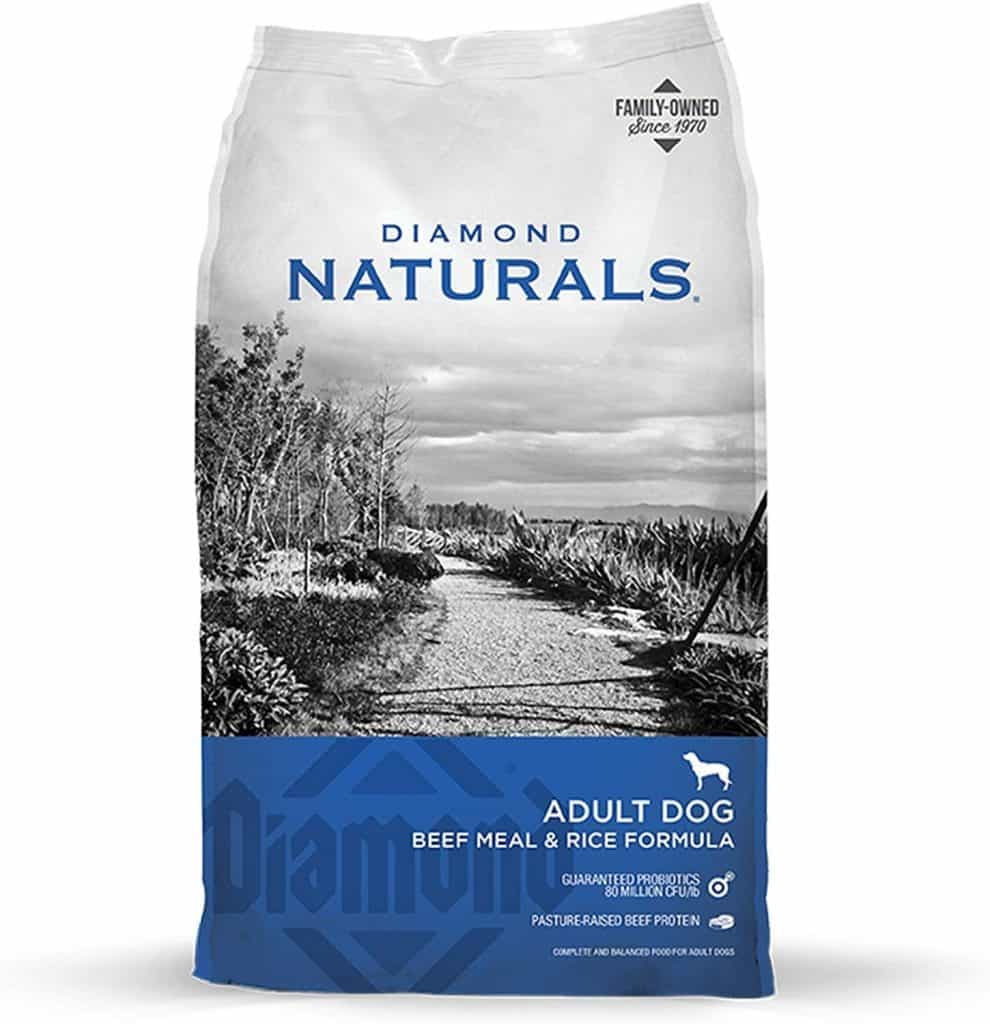
- Made in the USA by a family-owned company using quality ingredients from trusted domestic and global sources.
- With real pasture-raised beef protein as the #1 ingredient, this recipe helps support bones, joints and lean, strong muscles.
- Beef protein provides energy and muscle building blocks, omega fatty acids promote skin and coat health and superfood fruits like blueberries and oranges offer vitamins and minerals.
- Each serving includes species-specific K9 strain proprietary probiotics, plus antioxidants and prebiotics to help support healthy digestion, immune system health and overall wellness.
- Made without corn, wheat, artificial flavors or colors.
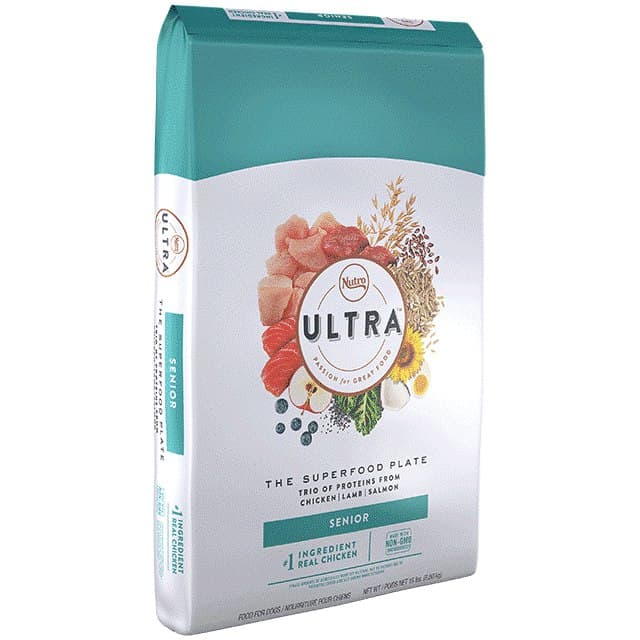
- Protein-rich formula features chicken, lamb, and salmon—and chicken is the first ingredient!
- Contains a blend of 15 superfoods including coconut, chia, kale, and blueberries that promote coat and skin health.
- Recipe specially formulated for senior dogs using only high-quality, real ingredients to provide complete and balanced nutrition.
- Ingredients are sourced from trusted farmers and rigorously tested for quality and food safety.
- No artificial preservatives, flavors, or colors, and chicken by-product meal, corn, wheat, and soy protein free.
History of the Pom-Dach
 Source: greatgoldenweenie
Source: greatgoldenweenie
This little cross is a relatively new one. There’s no way to know for sure, but the best guess is that they emerged somewhere in the 1990s, probably in the USA, where the designer dog craze was (and still is) at its peak. Because it’s still so new, there are no ways to understand the Pomeranian Dachshund cross thoroughly, but we can get a good idea about it if we take a quick look at its parent breeds history.
Fearless and determined, Dachshunds were bred in Germany more than half a millennium ago to do one thing—hunt the burrowing animals that made the country folk’s lives a living hell. The most fearsome foe was the badger, the beast so mean and stubborn (ever heard the phrase to badger somebody into something?) that a contemporary city-dwelling grown man would run in the opposite direction upon sighting it. Not a Doxie, though. These little fellows would bravely dig into the barrows, navigate the underground tunnels with their conveniently short legs and a fantastic sense of smell, kill the beast, and drag it back out to present it to their human partners.
In the meantime, they would communicate their location to their partners by barking. Considering their small size, it’s an impressive feat. Everything about a Dachshund can be explained if you consider their origins—their pig-headedness, fantastic bravery, one-track mind, incessant barking, the tendency to wreck your flower beds utterly, you name it. One interesting Dachshund fact is that even Picasso was amazed by these little beauties.
Despite their shortcomings, they have been among the favorite dog breeds in the USA since World War I and even found their way to our list of best dog breeds to adopt. If you’re a fan, check out these ten facts you should know about Dachshunds with pictures and a Dachshund breed guide, or take a quick look at our collection of Dachshund memes for a quick laugh.
While Dachshunds retained most of their original shape, Pomeranians have gone through some serious changes. Did you know that Pomeranians used to be sled-pulling dogs? They were much larger than today, and their coat was less impressive but still quite warm.
Today’s version was named after the region in northern Poland and Germany. It was brought to England by Queen Charlotte, the consort of King George III, and reduced to its current size mostly through the efforts of Queen Victoria. Two Pomeranians survived the sinking of Titanic, carried in the arms of their loving lady guardians!
Today, their big working dog origins have been forgotten—by everyone except the Pomeranians themselves. Still persuaded that they’re much larger than they actually are, these pups won’t pause for a second to pick a fight with a much larger dog if they feel it’s necessary. There are many other interesting Pomeranian facts, so check them out if you’d like to know more!
Three Reasons Not to Adopt a Dachshund Pomeranian Cross
Even though they’re cute and fancy, Dachshund Pomeranian cross pups are not everybody’s cup of tea. Here are three reasons to skip this breed.
- They can be terribly loud.
- They are incredibly clingy.
- They usually shed a lot.
They Can Be Terribly Loud
Both Dachshunds and Pomeranians are lively and love to bark. They’ll bark at anything they consider bark-worthy. You may not agree with their views of barkworthiness, but that’s your problem, not theirs. A bird on a window sill, a leaf in the wind, and a fly are all worth talking about, and you’re dealing with a blabbermouth here. If barking annoys you, don’t get a Doxie-Pom.
They Are Incredibly Clingy
A Pom-Doch will love you with all the strength their little souls can possibly muster, which is nice, but it also means that they’ll never be happy without you. They’ll show their unhappiness by destroying your furniture, shoes, and other possessions. They’ll howl because they’re lonely and make all your neighbors plot your and your dog’s demise. If you’re away from home and can’t take your pooch with you, choose a less clingy pet.
They Usually Shed a Lot
If you’re aware of your own neat freakiness, don’t adopt a Pom-Doch. They shed a lot, especially in season, and you can do little about it other than vacuum all the time. If you’re not prepared to have dog hairs everywhere, do yourself a favor and find a breed that doesn’t shed as much as a Dameranian.
Three Reasons to Adopt a Pomeranian Dachshund Cross
 Source: siljemid
Source: siljemid
If their downsides don’t frighten you, you can get one of these cutie pies peacefully. Here are three reasons to adopt a Pomeranian Dachshund cross.
- They make great family dogs.
- They can be excellent watchdogs.
- They don’t need a lot of space.
They Make Great Family Dogs
You Doxie-Pom, will get along with everyone in the family. They love children and are energetic and playful so that the children will love them right back. They don’t like being left alone, so living in a household with multiple members can be great for them because the chances of loneliness are much lower. All in all, Dameranians are fantastic family pets.
They Can Be Excellent Watch Dogs
Their barking tendencies can be quite useful if directed well. Pom-Dachs are suspicious of strangers and will always let you know that somebody is coming. With a little training, you can teach them to save most of their barking for when it matters—but never expect them to be quiet when they want to speak. If you have a need for a watchdog, this is one of the mixes you can consider.
They Don’t Need a Lot of Space
Because they’re so small, Pomaweenies don’t require a lot of space to be happy. As long as you’re there, they are fine living in a small apartment, just the same as if they were living in a mansion. If you have a yard, that can be a place for playing sessions, but if you don’t—a park will work just fine. If you live in an apartment, this might be the dog for you.
Brains and Booty of a Pomaweenie
When it comes to their physical characteristics, a Pomaweenie tends to be a fair mix of its parents. Of course, there are no guarantees because it is a cross-breed. They tend to inherit the short legs of a Dachshund and the luxurious coat of a Pomeranian. The coat is the thickest around the neck and tends to be toned down—but still quite dense—on the rest of the body. The body is longer than that of a Pomeranian but not as long as you’d expect in a pure-bred Dachshund. Their ears are as large as a Dachshund’s and can be both floppy and erect.
Their temperament makes Damerians excellent companions and family dogs. They are fiercely loyal to their people but tend to have a favorite. They can be quite clingy, which is why it’s better for them to live with multiple people so they’re rarely alone. They like to bark—it’s a trait they inherit from both sides of the family. Combined with a little training and their suspicious nature when it comes to strangers, this trait makes them great watchdogs.
They love people and children and love to play with toys. Because the Pomeranian in them lowers the high prey-drive on the Doxie side of the family tree, they get along with other pets and are not likely to eat your chinchilla. They have a bit of a big-dog attitude, though, and they might pick a fight with a Bulldog in a park. Be aware of this dangerous tendency, and keep your pooch on a leash at all times.
| Weight | 5–20 pounds |
| Height | 5–12 inches |
| Size | Small |
| Coat type |
|
| Coat color |
|
| Shedding | High |
| Eyes | Brown |
| Nose | Black |
| Ears |
|
| Temperament | Loving, outgoing, lively, playful |
| Life expectancy | 12–15 years |
| Hypoallergenic | No |
| Kid-friendly | Yes, but supervision with little children required |
| New owner friendly | Yes |
| Breed recognition |
|
Common Health Concerns for a Dameranian
 Source: justicekitty
Source: justicekitty
Dameranians tend to be healthy little creatures, but they can inherit some conditions from their parents. Here are the most important health concerns for this cross-breed.
- Patellar Luxation. This is just a fancy term for kneecap dislocation in dogs. It is not necessarily painful while the knee is dislocated, but your pooch will suffer quite a bit of discomfort at the moment when the dislocation happens. Your dog won’t want to put any weight on the affected leg, and instead of walking, they’ll be hopping around, carrying the leg. If you notice any such or similar behavior, take your dog to the vet as soon as you can.
- Epilepsy. The most obvious symptom of epilepsy in dogs (and the only one you can notice) is seizures. Seeing your dog during a seizure can seem terribly frightening, but stay calm and take them to a vet immediately. Epilepsy happens because of some sort of inborn brain defect or for unknown reasons. Your vet will treat it with medicines, but you can only take care of the symptoms, not heal it completely.
- Allergies. Like with humans, allergies in dogs are an adverse reaction of the immune system to outside stimuli. Your pooch can be allergic to plants, bugs, microorganisms, and so on. Mild symptoms are coughing, sneezing, and a runny nose, but your buddy could also develop an itch or even get diarrhea or start vomiting. Make sure you take them to the vet in order to find out what exactly the problem is and how to make your Dameranian’s life a bit more bearable.
Back problems and skin issues are frequent with Dachshunds, which can affect their quality of life and lifespan. They are also prone to seizures. If you notice any of these symptoms, take your pooch to the vet. If you take good care of your Doxie, you will protect them from health issues. The same goes for Dameranian cuties. Regular check-ups can go a long way in spotting some of these problems before they become even more severe. Occasional tests will allow you to help your pooch sooner rather than later or, at the very least, put your mind at ease.
| Major concerns | Minor concerns | Occasional tests |
|
|
|
What Food Should You Offer to Your Doxie-Pom?
Due to their small size, Doxie-Poms shouldn’t overeat. They tend to gain weight easily, so avoid overfeeding them. One cup of high-quality dry food per day should be enough for your pooch, and you should split it into two meals to stop them from overeating. To stay healthy, your pup will need to eat high-quality food, so try to avoid these worst dry dog food and worst dog treat brands.
Some of the best options are:
- Wellness Core® Natural Grain-Free Dry Dog Food. Whenever we’re talking about a Dachshund mix, this brand is a fantastic choice. Glucosamine and chondroitin, which are integrated into the food, help maintain the health of the bones and joints, with which Doxies tend to struggle.
- Taste of the Wild Appalachian Valley Small Breed. With a superb selection of high-quality meat, this food is an excellent source of protein and fiber. If your pooch has a sensitive stomach, this should be your go-to dog food.
- Blue Buffalo Wilderness Toy Breed Adult Grain-Free Chicken Recipe. The shape of the kibble helps remove tartar from your buddy’s mouth, and the omega-3 and fatty acids help improve the health and quality of their coat. It’s based on chicken meat, and it’s grain-free, so it’s another great option.
For some additional high-quality options, check out our list of best dry dog food for small dogs. In case your Doxie-Pom prefers wet food, take a look at these best-canned dog food brands. You should also adapt the diet to the age of the dog. If your pup is already past their prime, choose among the best senior dry dog food brands to ensure their health and happiness in that trying age. For little munchkins, you should find the best puppy food brands.
Check out our reviews for the following dog food brands:
- Showtime dog food review
- River Run dog food review
- Wellness Core dog food review
How Much Exercise Does a Pomeranian Dachshund Mix Need?
 Source: woofbert
Source: woofbert
The Pomeranian Dachshund cross is a cheerful, active, and curious mix. They’ll play a lot—with you, your kids, other pets, other dogs in the park, alone with their toys, and so on. They’ll spend a lot of energy on their own, so you won’t have to go a lot out of your way to provide them with the necessary exercise.
You should spend between 45 minutes and an hour every day walking your dog and playing with them. Two 15–20 minutes’ walks and a 15–20 minutes’ playing session should take care of your pooch’s needs. Still, every dog is an individual, so you might end up with a particularly hyper Pom-Dach or a total couch potato, so adapt the daily activities to your dog’s needs.
| Activity level | Recommended miles/day | Activity minutes/day |
| Moderate | 9 | 45–60 |
How Much Effort Goes into Grooming a Dachshund Pomeranian Mix Pup?
You should brush your Doxie-Pom at least once a week. If their coat is exceptionally long and fluffy, you should do it more often—a minimum of two or three times a week. They shed a lot, especially in Spring and Fall, so you might want to increase the frequency of brushing during those periods. Make sure to use the best grooming scissors in case you want to take care of your pup’s coat on your own. If your pooch suffers from dry skin, consider changing their diet.
Clip their nails every two weeks. You’ll need to bathe them occasionally, but instead of making a schedule, do it when there’s an actual need—when they roll in something smelly or get dirty. Pay attention to their teeth. If possible, you should brush them every day. You can get away with brushing three times a week, provided you get some good dental chews. If you need ideas, here is a list of the top 10 best dog dental chews. Don’t neglect their ears—they tend to be large, like a Dachshund’s, so inspect and clean them regularly.
Follow our guidelines for the best dog grooming tips.
| Brushing frequency | Brushes for Poodle Dachshund Mix |
| Weekly |
|
Is It Difficult to Train a Pom-Dach?
 Source: angel_dameranian
Source: angel_dameranian
Training a Pom-Dach is fairly easy. Both parent breeds are eager to please, which can usually cancel out the pig-headedness of a Doxie. They are motivated by food and learn best with a lot of positive reinforcement, so use lots of praise, treats, and gifts. It’s important not to lose patience with them and not to use punishment as a teaching method because, that way, you’ll just provoke their stubborn nature. Follow our guidelines in Dachshund training and Dachshund potty training; you will find lots of interesting ideas there.
Avoid 5 most common mistakes in dog training. If you have a puppy pup running around your house, take a look at our suggestions for the best ways to train a puppy.
Are Doxie-Poms Good Family Dogs?
Doxie-Poms are excellent family dogs. They love playing, so your children will adore them. They do have a reasonably strong prey-drive, thanks to the Doxie side of the family, but the Pom in them can reduce it significantly. That means that they can learn to live with other animals, even as small as hamsters, without chasing them around and making them miserable.
Like any other dog, Doxie-Poms shouldn’t be left alone with little children. While the Doxie-Pom is incredibly affectionate and loving, children can easily hurt them if they don’t know how to handle them. Train both your kids and your dog before you leave them together without supervision.
Check Out These Other Cute Dachshund Mixes
It’s okay if you still can’t make up your mind on whether or not you want to open your home to a Doxie-Pom. There are other Doxie mixes that might be just as interesting to you, so check them out!
| Dachshund Pug mix | Dachshund Lab mix | Dachshund Beagle mix |
| Dachshund Golden Retriever mix | Dachshund Pitbull mix | Dachshund Corgi mix |
| Chihuahua Dachshund mix | Jack Russell Dachshund mix | Dachshund Poodle mix |
| Dachshund Yorkie mix | German Shepherd Dachshund mix | Dachshund Terrier mix |
| Pomeranian Dachshund mix | Cocker Spaniel Dachshund mix | Shih Tzu Dachshund mix |
| Min Pin Dachshund mix | Basset Hound Dachshund mix | Dachshund Husky mix |
| Maltese Dachshund mix | Dachshund Dalmatian mix | Australian Shepherd Dachshund mix |
| Border Collie Dachshund mix | Rottweiler Dachshund mix | Doberman Dachshund mix |
| Papillon Dachshund mix | Rat Terrier Dachshund mix | Italian Greyhound Dachshund mix |
| Bulldog Dachshund mix | Blue Heeler Dachshund mix | Boxer Dachshund mix |
| Great Dane Dachshund mix | French Bulldog Dachshund mix | Weimaraner Dachshund mix |
| Dachshund Boston Terrier mix | Cavalier King Charles Spaniel Dachshund mix | Cairn Terrier Dachshund mix |
| Shiba Inu Dachshund mix | Dachshund Bichon mix | Pekingese Dachshund mix |
| Schnauzer Dachshund mix | English Cream Dachshund |
If you wish to see some more Pomeranian mixes, take a look at our list of Pomeranian mixes and the table below:
| Husky Pomeranian Mix | Corgi Pomeranian Mix |
| Pug Pomeranian Mix | Dachshund Pomeranian Mix |
FAQs: Dachshund Pomeranian Mix – The Best Pom-Dach Guide
Q1: What is a Dachshund Pomeranian Mix, and what is it commonly known as?
A: The Dachshund Pomeranian Mix, often referred to as the ‘Pom-Dach,’ is a delightful crossbreed that blends the distinct traits of the Dachshund and Pomeranian breeds.
Q2: What are the typical traits of a Dachshund Pomeranian Mix?
A: The Pom-Dach showcases a charming blend of characteristics, combining the Dachshund’s elongated body with the Pomeranian’s fluffy coat and lively personality.
Q3: How much exercise does a Dachshund Pomeranian Mix require?
A: Pom-Dachs benefit from regular exercise, including walks and playtime, tailored to their size and energy levels. Daily physical activity is crucial to keep them healthy and happy.
Q4: Is the Dachshund Pomeranian Mix good with children and other pets?
A: Typically, Pom-Dachs are known for their friendly and adaptable nature, making them suitable companions for families with children and other pets. Early socialization is recommended.
Q5: Why do Pomeranians bark so much, and does this trait carry over to a Pom-Dach?
A: Pomeranians have a tendency to bark frequently due to their alert and lively nature. This trait may carry over to a Pom-Dach, and consistent training can help manage excessive barking.
Q6: How much exercise does a Pomeranian need, and does this apply to a Pom-Dach?
A: Pomeranians require moderate exercise, and this need may carry over to a Pom-Dach. Regular walks, play, and mental stimulation contribute to their well-being.
Q7: When do Pomeranians stop growing, and does this apply to a Pom-Dach?
A: Pomeranians generally reach their full size by around one year of age. The growth pattern may vary for a Pom-Dach, and consulting with a veterinarian can provide specific insights based on the individual dog.
References
- https://en.wikipedia.org/wiki/Dachshund
- https://en.wikipedia.org/wiki/Pomeranian_(dog)
- Sauvé, Christopher P., et al. “Oronasal and Oroantral Fistulas Secondary to Periodontal Disease: A Retrospective Study Comparing the Prevalence Within Dachshunds and a Control Group.” Journal of Veterinary Dentistry, vol. 36, no. 4, 2019, pp. 236–244., doi:10.1177/0898756420909657.
- Beauchesne, Ryan. Crusoe, the Celebrity Dachshund: Adventures of the Wiener Dog Extraordinaire. St. Martins Griffin, 2015.
- Coile, D. Caroline. Pomeranians For Dummies. John Wiley & Sons, 2007.
80% of Dogs Develop Arthritis or Joint Pain by 7 Years old – Here’s How to Protect Them
Most of us train our dogs when they are puppies to jump up on furniture. We think it’s harmless (and easier than always lifting them), but for dogs, couches and beds are very high compared to the size of their bodies.
Every time they jump it compresses their back and applies enormous force to their joints.
It’s no wonder that an incredible 80% of dogs experience arthritis or joint pain by only 7 years old.
Luckily, there is a vet-recommended solution.
It’s the PawRamp by Alpha Paw. An adjustable ramp that allows dogs to safely get on and off couches and beds. PawRamp makes joining you in bed or on the couch effortless and fun.
As a bonus, you can use code SAVE35 to get $35 off the PawRamp today.

